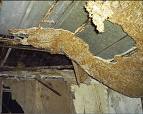Environmental Hazards Landlords Should Know About
 Landlords are legally required to provide tenants with habitable living space. That means you provide working heating, water, plumbing and electrical systems, a roof that doesn’t leak, floors that aren’t rotten, and common areas that are safe for everyone.
Landlords are legally required to provide tenants with habitable living space. That means you provide working heating, water, plumbing and electrical systems, a roof that doesn’t leak, floors that aren’t rotten, and common areas that are safe for everyone.
These are the obvious factors. Depending on where you live, hidden dangers could be lurking in your rental property, threatening your tenants and costing you money to repair. Here are some environmental health hazards every landlord should know about:
Radon: This colorless, odorless, tasteless gas is a major cause of lung cancer. The EPA estimates radon contributes to 21,000 lung cancer deaths per year in the U.S. (2nd only to smoking). Radon occurs naturally in the soil, and can seep into houses—and stay there if the house is highly insulated or poorly ventilated. Landlords are not required to test for radon, but if your property is in an area with historically high levels of radon, you should consider it. Ask your local housing authority for more information.
Mold: Molds are everywhere, and some people are sensitive to even small amounts of airborne mold spores. But when they accumulate in large quantities, molds can cause allergic reactions and respiratory problems—or even neurological problems and death. Wet conditions, from floods, humidity, plumbing leaks, or rainfall, can cause mold to grow. That’s why it’s important to inspect your rental properties often, and to repair or replace water-damaged floors, ceilings, and walls immediately. Educate your tenants about the hazards of allowing water to gather in bathrooms and kitchens, and remind them to report mold or mildew immediately. Keeping the lines of communication open with your tenants can keep everyone safer.
Asbestos: Asbestos is a harmful substance used in building materials such as insulation, tiles, and vinyl flooring, prior to 1981. OSHA requires owners of rental properties built before then to notify contractors and maintenance workers that asbestos may be present. Owners of these older homes should consider having them professionally tested for asbestos. Check OSHA’s website for more information.
Lead: Lead-based paint can be a real problem for owners of older properties. Although banned in 1978, it could still present in older rental units. The paint itself is not a health hazard until it cracks, peels, or turns to chalk with age. And sanding or scraping it releases lead dust, which is a serious health hazard, especially to young children. Federal law requires rental property owners to disclose any known presence of lead-based paint and provide all tenants with copies of records pertaining to the presence of lead-based paint.
CO: Carbon monoxide (CO) is a toxic gas produced by incomplete combustion of fossil fuels: oil, natural gas, wood, coal, and gasoline. In homes, the major sources of CO are fossil fuel burning furnaces, boilers, water heaters and fireplaces. Every year, carbon monoxide poisoning kills 500 people. Most could have been saved with a properly working carbon monoxide detector. If you are a landlord, your state may require carbon monoxide detectors to be installed and maintained in your rental units. But keeping your tenants safe is the right thing to do, whether or not you are required by law to install detectors.
